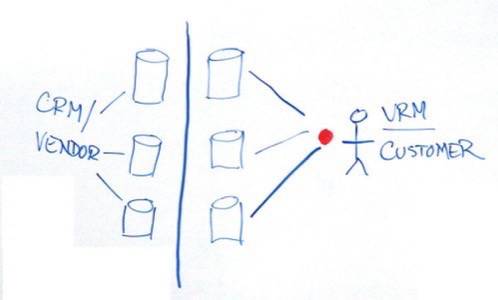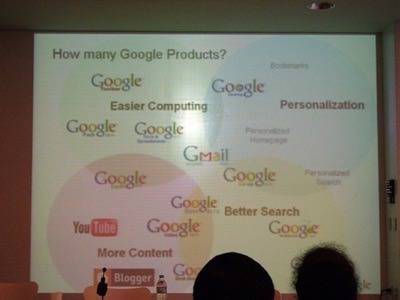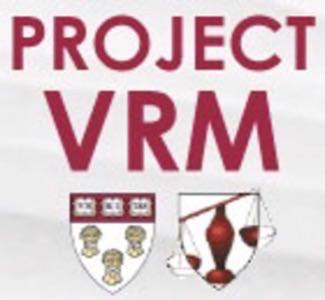We are about to witness the loud noise and mess that happens when an irresistible force meets an immovable object.
The irresistible force is personalization. This is the key to productivity. Personalization technology cuts through the clutter and saves time. The firm that delivers personalized content sits at the top of the attention economy food chain; all other content is Äúdrive-by commodityÄù. Personalization leads to relevancy in advertising; and loyal customers.
The immovable force is privacy. You cannot do personalization effectively without knowing an awful lot of information about an enormous number of people. The privacy backlash is building. Today it is only techies who are aware of the issue and where it is headed, but when mainstream users get spooked by a few more high profile cases, we will see consumer backlash and then, with politicians on the bandwagon, more regulation.
This will make a loud noise and will be messy; and in that mess will be big opportunities for entrepreneurs. VRM (Vendor relationship Management) may be a key part of this, which we’ll explore in this post.

Consumer backlash and regulation will take time to play out, but when it happens it’ll change the rules totally. Look what happened to the Direct Marketing industry. The ease with which technology enabled us to build large contact databases and put them into the hands of traditional direct mail marketers led us to Can Spam and Do Not Call regulation. More importantly it encouraged all of us to find many different ways to block out the intrusive marketers.
People just got fed up with intrusive marketing. However, traditional direct mail will seem merely annoying compared to the intrusiveness of pitches that will seem to know precisely who I am, what I did yesterday and so on.
If there is any justification for that $15bn Facebook valuation (I don’t think there is, but that’s another story) it has to be based on the fact that the advertiser can know so much about you and all your friends, so that they can target incredibly precisely.
In the glorious world being presented by technologists, personalization will be so precise and so useful that nobody will question the privacy invasion. Yeah right — that may be true by the time we get to Version 3.1. But well before then, we will get enough examples that are almost exactly right but wrong in some crazy, chaotic way, that it spooks and offends enough people to set the Blogosphere on fire. Then MSM will pick up on the story and then politicians and regulators will jump on board.
VRM: The Next Big Opportunity?
Yes, I know, the Attention Economy guys have been banging on about this for a long time and it all seems somewhat theoretical. The basic idea – that data about me is my data and I should be able to control it and benefit from who has access to it – is sound and resonates with people at a gut level. The problem is that the proponents have not yet come up with an alternative model that works in practice. Beyond a few people who live online, seeing the stream of stuff we look at online is about as interesting as watching paint dry. I once looked at my Google search history and it was “ok, now what?”.
There has to be a “show me the money” angle; either in cash, or more likely in productivity and cost savings. The model of paying people specifically to look at advertising is likely to catch lower income people with time on their hands – not the ideal target for advertisers.
It has been interesting to watch the thinking evolve:
1. CRM. That’s good, we can keep track of our interactions with customers.
2. One to One Marketing. Turned out to be a mirage. Mass marketers do segmentation. Genuine mass customization is years away. The front end for that is not hard, the back end is really, really tough and involves massive enterprise change.
3. Attention Economy. The basic issue around supply and demand (supply of content is exploding, demand is relatively static) is sound. Try explaining to somebody quite how this is different from “eyeballs” and what it means to them. Eyes tend to glaze over.
4. Intention Economy. Inferring Intention is why Google is valued at $200 billion. The trouble for the rest of us is: if Google has search all wrapped up, what is left as an opportunity?

5. Vendor Relationship Management. Doc Searls, who’s thinking evolved through Attention and Intention, is leading the charge on this. To quote their front page:

“VRM, or Vendor Relationship Management, is the reciprocal of CRM or Customer Relationship Management. It provides customers with tools for engaging with vendors in ways that work for both parties.
CRM systems until now have borne the full burden of relating with customers. VRM will provide customers with the means to bear some of that weight, and to help make markets work for both vendors and customers Äî in ways that don’t require the former to “lock in” the latter.
The goal of VRM is to improve the relationship between Demand and Supply by providing new and better ways for the former to relate to the latter. In a larger sense, VRM immodestly intends to improve markets and their mechanisms by equipping customers to be independent leaders and not just captive followers in their relationships with vendors and other parties on the supply side of the marketplace.
For VRM to work, vendors must have reason to value it, and customers must have reasons to invest the necessary time, effort and attention to making it work. Providing those reasons to both sides is the primary challenge for VRM.”
VRM is still at the conceptual, evangelizing phase. It has yet to be built into a real service that offers real value to both buyers and sellers. There is a real entrepreneurial opportunity here.
Get Ready for the Privacy Backlash
In some respects, this looks like the old idea of “Infomediaries” being recycled. That concept was first raised by John Hagel in 1997 in the Harvard Business Review. Recycling is a good thing. Sometimes the timing simply has to be right.
The timing will be perfect when the privacy backlash really hits. A smart entrepreneur can get ready in anticipation of that. Of course it may never happen, but betting against buyer power in the Internet age is seldom smart.
One key to VRM is ID authentication and that is a tricky subject. It is technically fairly simple. All you need is something like the numbered bank account system which records that ID #1234567 is actually Joe Q Public, male, date of birth, zip code and other details that Joe Q Public controls. The linkage between the two has to be totally secure. The bigger issue is who can be trusted as that Infomediary?
For people to feel genuinely comfortable with privacy, personal data must be a) decentralized (a P2P model or federated servers) b) as secure as possible from hackers. With the number of high profile cases already public, people won’t trust a central database even if the provider has all the best intentions regarding privacy; they can change their mind or their data can be stolen.
The other key is order aggregation. Much as we like to see ourselves as the center of the universe, sellers need volume and are not set up to manage a stream of customized orders. It’s a lovely idea but it won’t happen, because the seller’s systems are not ready.
Order aggregation is also not new as an idea. Again the timing might be right as companies tear down their command and control systems and everything moves to a retail model. What is the Purchasing Department (who loves ya Baby?) other than an order aggregator?
Conclusion
This may play out first in B2B and professional markets before it happens in the broad consumer market, for the simple reason that transaction value per individual is higher.
I like VRM as a catchphrase. It is dead simple to understand. It is intuitively appealing to people. Can we say Vroom?
What do you think? Is VRM a viable model? Where could it play out first? What are the alternative models that can combine the benefits of both personalization and privacy?










